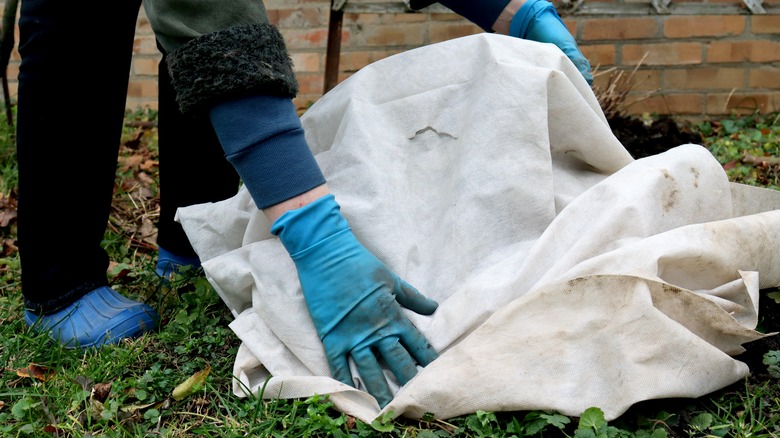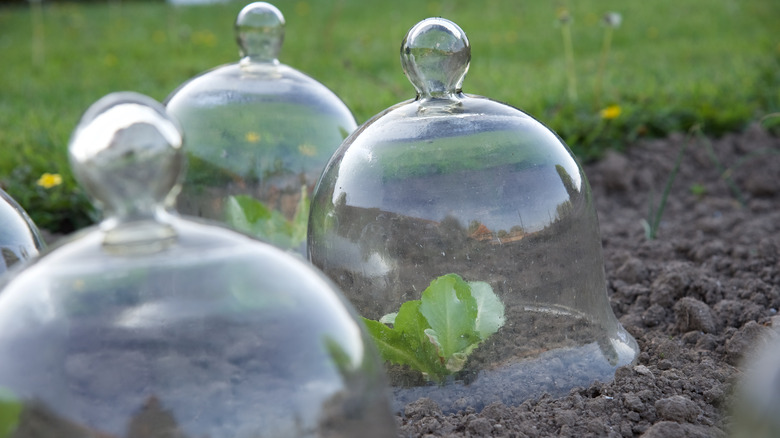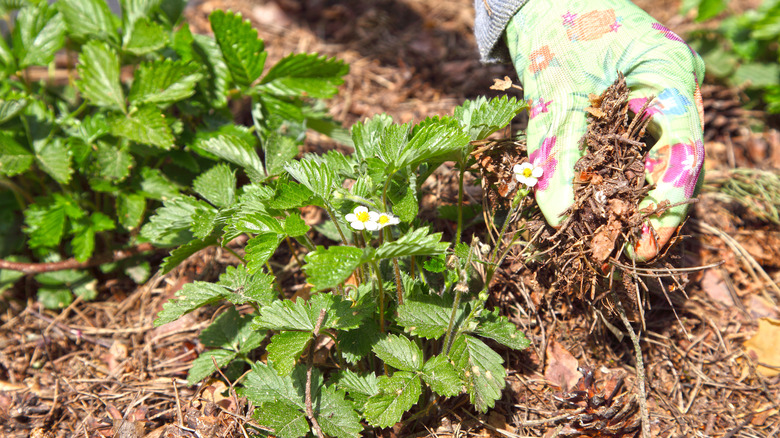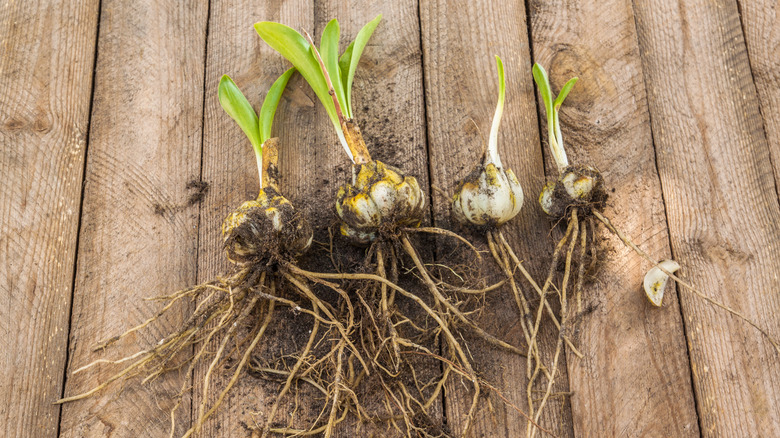4 Tips For Protecting Your Plants From Frost
The distinction between perennial and annual plants often begins with their USDA growing zone. While some plants simply have a short lifespan no matter where you plant them, for the majority of annuals it's that they can't withstand harsh weather and freezing temperatures. For example, a heat-loving plant such as the southern magnolia is only hardy in zones seven to nine (via Missouri Botanical Garden); this means that the tree can grow year-round in parts of the U.S. such as Florida, Texas, Arizona, and Southern California for years, but it will only last one summer in northern states like Washington, Montana, or Michigan.
Still, there are steps you can take to protect warm weather perennials from frost as winter approaches. With the right techniques, you can give your favorite flowers, herbs, and shrubs a fighting chance against the oncoming weather so they may survive into the spring and summer. Replanting annuals yearly can become costly and time-consuming. Try out these four easy tips to protect your plants and hopefully avoid replenishing your garden each year.
Bring container plantings indoors and cover larger plants
The easiest and most obvious way to provide protection from winter frost damage is to bring your plants inside in fall. Of course, this is not a solution that will save all your plants, but it's a good place to start. When you begin planting your favorite warm weather plants in the spring, consider keeping them potted instead of transplanting them into the ground. This way, you can simply transition the containers into your indoor living space where they'll ride out the winter months. Keep in mind that bringing container plants indoors is not as easy as picking them up and moving them, according to Pennington. There are several steps you'll need to follow to do this properly, including preparing your indoor space, checking for pests, and acclimating the plants slowly over the course of a few days or weeks.
If you can't bring your plants indoors, you have other options. Many gardeners cover larger plants with cardboard boxes or breathable fabric sheets. They might also create a plant cave for potted plants that won't fit in their house. As Wenke Greenhouses mentions, covering plants with any of these items helps ensure that the moisture on and inside of your flowers, herbs, and shrubs will not freeze. A simple cover allows plants to go dormant due to the cold weather, but it won't allow frost to form.
Create a mini greenhouse
Most often, it is not recommended to cover your plants with plastic to protect them from frost, says Green Impressions. Thin, flexible plastic doesn't allow air to circulate around the plant which causes excess moisture buildup that can lead to disease. Additionally, if plastic is left on the plant while the sun is out, it can become superheated and cause the plant to come out of dormancy or even burn. However, when used correctly, rigid plastic coverings can be useful to create mini greenhouses around tender perennial plants.
This type of covering is referred to as a cloche. You can buy pre-made cloches or you can make your own out of a plastic bottle, milk jug, or another rigid plastic container. The Royal Horticultural Society mentions that cloches can be made out of glass, as they originally were. Typically glass cloches work better in the garden because they stay warmer overnight, but they're also more expensive. If you decide to use a cloche to protect your tender garden plants, be sure to keep a close eye on the humidity and daytime temperature inside the container.
Tuck in your low-growing plants for the winter
Low-growing perennials such as strawberries, flowering thyme, lily of the valley, and creeping phlox, can all benefit from mulching as winter approaches. Many of these somewhat hardy plants can survive after a winter storm because the snow insulates and protects them from frost. However, it's not uncommon for cold areas up north to experience random warm days that melt the snow before winter is over. When this happens, Proven Winners points out that low-growing perennials then become exposed to the harsh cold winds that cause frost damage.
To avoid losing your plants to this issue, you can mulch your low-growing frost tender perennials. This means covering their roots with an organic material such as straw, compost, pine needles, or shredded bark to protect them from the wind. Mulch will help to retain soil moisture, keep your plants in their dormant state, and ward off frost damage. Usually, a 2 to 4-inch layer will do the trick. Be sure to pick a good quality mulch that allows for airflow while also keeping the soil at a consistently cool temperature. In a pinch you could also use grass clippings and pebbles as a substitute for mulch.
Dig up your bulbs
Bulbous perennials such as tulips and daffodils can be planted in very cold regions, and they'll continue to flower each year without being dug up. However, if you are growing flowers from tender bulbs like canna lilies, dahlias, caladium, or tuberous begonias, as per the University of Wisconsin-Madison, digging them up before the first hard frost in your area can save you from replanting these expensive garden plants again and again.
Thankfully, the process of digging up tender bulbs is relatively simple. Most of these flowers need to be pulled from the ground just after the first light frost. This first frost will kill the top growth and signal to you that the bulb should be dug up. Do not wait to unearth your bulbs after this happens; waiting more than three days can lead to disease rendering them worthless next season. After each of your bulbs are out of the ground, gently wash off the excess soil and set them out to dry before storing them. Drying usually takes a few days, but depending on the species it may take weeks. When they're ready to be stored, check each bulb for signs of disease before finding them a cool and well-ventilated place to rest until winter passes.




